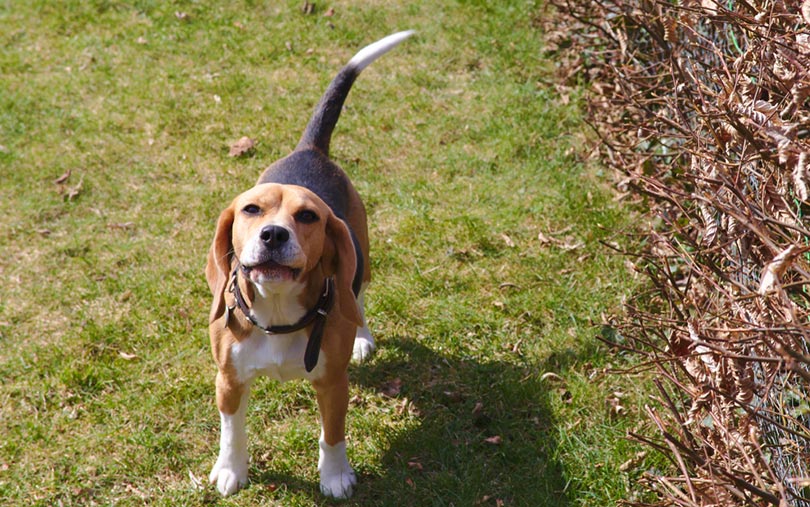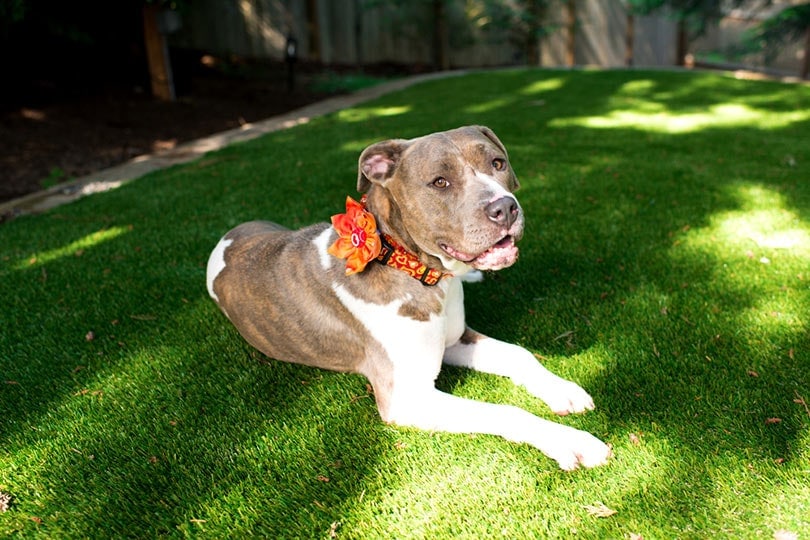Phantom Poodle: Facts, Origin & History (with Pictures)

Updated on
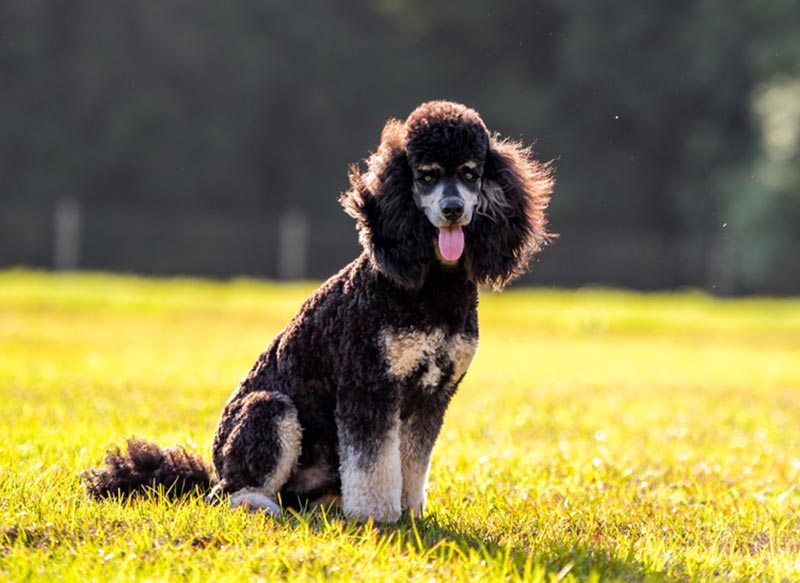
Click to Skip Ahead
Despite their name, Phantom Poodles are not some ghostly apparitions bent on haunting your treat cupboard. Rather, they’re simply Poodles with unusual markings that make them look a bit like they’re wearing a disguise.
Breed Overview
| Height: | 15 inches and over |
| Weight: | 40 – 70 pounds |
| Lifespan: | 10 – 18 years |
| Colors: | Apricot, black, blue, brown, cream, gray, red, silver, white |
| Suitable for: | Active families, large homes, multi-pet households, first-time dog owners |
| Temperament: | Lively, confident, happy, sweet, very smart |
Phantom Poodles are characterized by having a dark coat with specific markings on certain parts of the body: above their eyes, across the chest, on the sides of their cheeks or muzzles, under their tail, and down their legs. These patterns are fondly called “Dobie markings” because of how closely they resemble the markings of a Doberman Pinscher.
Black phantoms are the most common, but you can also find them in chocolate, silver, blue, gray, cream, red, apricot, and brown.
Keep reading for a complete guide to Phantom Poodles, including their history, appearance, temperament, and more!
Phantom Poodle Characteristics
The Earliest Records of Phantom Poodles in History
The Poodle breed, including Phantom Poodles, can be traced back to 14th-century Europe, and more specifically, in Germany. The word “poodle” is actually derived from the German word “pudel” or “pudelin,” which means “to splash in water.”
This likely refers to the Poodle’s original purpose as a waterfowl retriever. Poodles were bred to have dense, curly coats that protected them from cold water and helped them swim more efficiently.
Poodles were introduced to North America around the late 17th century, and they were officially recognized by the American Kennel Club in 1887. What’s even more interesting is that Poodles are the national dog of France: the French monarchy has owned them as pets as early as the 1600s!
As for the phantom coloration, there’s no concrete evidence as to when or where it first appeared. However, we do know that their beautiful marks are because of a specific genotype—the ky/ky, which is a non-solid black that lets other colors be expressed. This is then combined with E (brindling) or EM (black mask), then at/at (tan points).
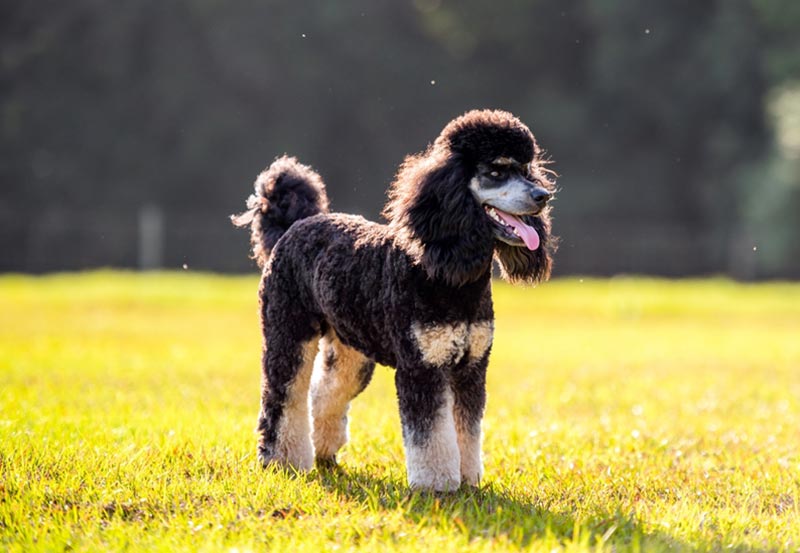
How the Phantom Poodle Gained Popularity
Because their appearance is so unique and rare, Phantom Poodles are one of the most sought-after colorations in the entire breed. In fact, they’re often considered to be one of the most exotic-looking poodle colors.
They’re so in demand, in fact, that it was only in 2005 when the German Poodle Club finally allowed them to be bred with other colors. Before that, phantoms were only allowed to be bred with fellow phantoms, AKA inline breeding.
This caused too much inbreeding to be done, which led to bloodlines with issues like overbites, excessively long jaws, and premature color fading. In other words, not the healthiest pups around.
Now that they’re allowed to be bred with other colors, Phantom Poodles are becoming more and more popular, especially in the United States.
Formal Recognition of the Phantom Poodle
While Phantom Poodles look stunning, they’re not currently recognized by the American Kennel Club (AKC). This is because they don’t fit into any of the existing poodle colors, which are black, white, brown, cream, apricot, gray, silver, blue, and red.
The AKC could potentially create a new color category for Phantom Poodles, but as of now, they’re not recognized in conformation events. However, that doesn’t mean they can’t participate in other AKC events, such as agility and obedience. If you’ve got a Phantom Poodle with a knack for sports, you can still enter them in AKC competitions.
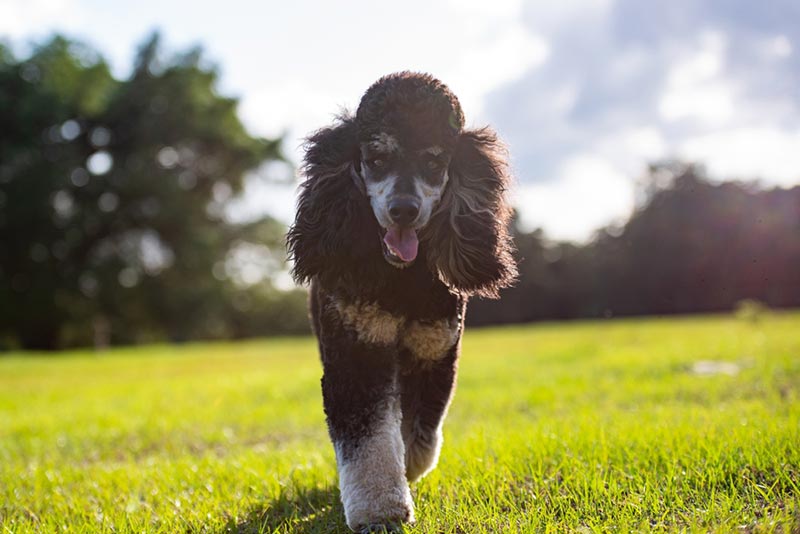
Top 3 Unique Facts About the Phantom Poodle
1. They’re different from brindle and parti Poodles.
Brindle Poodles have a coat with intermingling patches of light and dark colors. Parti Poodles, on the other hand, has a coat that is at least 50% white with patches of another color.
To be considered Phantom Poodles, the coat must be primarily one color with very particular markings similar to a Doberman’s coat pattern.
2. Phantom Poodles are born with their coat pattern.
Unlike other Poodle colors, Phantom Poodle pups already have their distinct markings when they’re born. They don’t fade out or change as the pup grows older. So, it’s easy to tell if a puppy will be a phantom just by looking at them!
3. The phantom coloration has no effect on a Poodle’s personality.
Phantom Poodles are just as loving, loyal, and intelligent as any other Poodle color. They’re also not vulnerable to any health conditions that are specific to their coloration.
Does the Phantom Poodle Make a Good Pet?
Well-bred, properly trained Phantom Poodles make fantastic pets. Poodles are super smart, and they love to please their owners, so they’re easy to train. They’re also very versatile dogs that can excel in a variety of activities, such as obedience, retrieving, and even flyball.
Thanks to their curly coat that barely sheds, Poodles are also a good choice for people with allergies. However, that coat needs regular maintenance because it’s prone to mats and tangles.
Phantom Poodles are just as active and playful as any other Poodle, so they need plenty of exercise. A good game of fetch or a long walk will suffice, but they’ll also love to join you on a run or hike.
Conclusion
Overall, Phantom Poodles are gentle, loving dogs that look amazing to boot. They’re a terrific option for people who are looking for an active, intelligent, and low-shedding companion.
And while they’re not currently recognized by the AKC, they can still participate in a variety of other dog sports and activities. So, if you’re looking for a unique-looking pup that’s sure to turn heads, the Phantom Poodle just might be the perfect pet for you!
Featured Image Credit: Tanya Consaul Photography, Shutterstock




